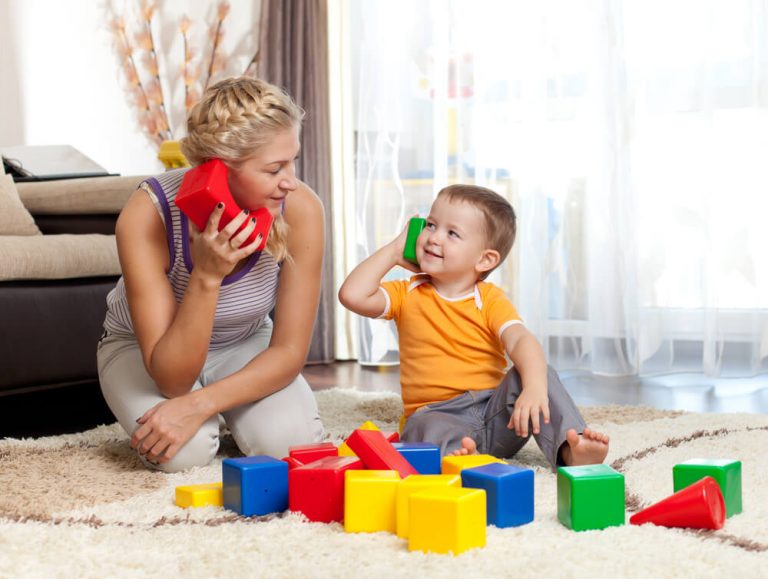How to Raise a Well-Behaved Child Without Suppressing their Personality?

Are you curious about how to raise a well-behaved child? Are you interested in laying the foundation for strong core values and teaching important life skills such as delayed gratification and reasoning skills? Are you wondering how to set strong behavioral expectations while still providing important emotional security?
Raising a well-behaved child means guiding them in a way that fosters both respect for boundaries and emotional intelligence. This includes modeling behavior you want to see, offering praise and empathy, and exposing them to experiences like public transportation and community service to build their understanding of the world.
Let’s face it: when raising their children, every parent is at least once faced with a dilemma of thinking about when they should display strictness and disciplinary methods, and when they should be softer and more relaxed. Claire McCarthy, MD of Harvard Health Publishing’s Child & Teen Health division, writes that understanding your child’s developmental stage is key to setting realistic standards and practices for discipline. It is important for everyone to find their balance, depending on their personality, beliefs, and opinions on education.
Today, we share an upbringing technique that is considered the most successful one, in which discipline does not hinder, but rather assists with the development of a child.
We have previously discussed the topic of child attachment to a parent, and a reliable, secure relationship being the basis of its development. Without this support, the child’s brain will be under stress, which inhibits development and redirects attention toward protection and survival.
If you want your child to be well-behaved and accommodating, and at the same time, to develop and grow into a full-fledged individual, use upbringing methods based on the theory of attachment, as it doesn’t create stress for the child. Instead, it maintains their feeling of security and a good relationship.
Contents:
- Which Upbringing Methods Bring More Harm than Benefits?
- Which Upbringing Methods Help with Child Development?
- Why is My Child Resisting and What Could Be Done About This?
- How Technology Can Help: Findmykids
- FAQs
Which Upbringing Methods Bring More Harm than Benefits?

fizkes/Shutterstock.com
There are a large number of upbringing approaches, but one of the most frequently used is the method of deprivation. This often includes conditionals and ‘blackmailing’ techniques like: ‘If you behave badly, you will be left home alone,’ or ‘If you don’t do as I say, I will take your favorite toy away.’ The aim is to deprive the child of something valuable, impacting their behavior—these methods can produce a well-behaved child in the short term. However, children learn to be convenient for the parent, to the detriment of their own needs.
The need for closeness and human interaction is a basic human instinct. Deprivation of contact or separation from loved ones triggers severe stress, which is unbearable for a child. While this might bring short-term obedience, it hinders true development and damages self-esteem.
The extreme and most painful method of education is any physical punishment or humiliation of the child to enforce obedience. This creates intense stress and teaches children to become compliant victims, a pattern that can foster further problems in adulthood. Studies show that the victims of domestic violence are most often people who were subjected to violence by their loved ones in their childhood.
For many of us, the dangers of physical child abuse are obvious; however, do we also notice other, more subtle facets of abuse in our parenting practices?
Other subtle yet damaging forms of discipline include unrealistic expectations for a developmental stage, excessive strictness, or continual use of punishment, all of which can lead to malformed data in a child’s perception of themselves and the world.
Remember: Good parenting involves a strong, kind authority paired with an empathetic, warm relationship. Your goal is not to suppress but to guide your child toward becoming well-behaved, confident, and empathetic.
Which Upbringing Methods Help with Child Development?

Alfira/Shutterstock.com
Developmental support and discipline need to be rooted in attachment, where the parent acts as a leadership figure.
If a parent is a leadership figure to the child, the rules that they dictate become valuable and important.
A good parent is neither too harsh nor too permissive. They are responsible, set clear boundaries, understand their child’s needs, and foster trust. Regular well-child appointments can also ensure your child’s development is on track.
The parent must understand the developmental particularities and the real capabilities of their child in accordance with their age, in order to strive for the right upbringing process.
To raise a well-behaved child, it is equally important to foster their reasoning skills, practice delayed gratification, and reinforce core values consistently. The prefrontal cortex, vital for self-control, develops gradually and becomes fully functional between ages 7–9, according to research published by Harvard Health Publishing.
Do not expect perfect behavior from young children; emotional outbursts are normal at certain developmental stages.
It is impossible to expect perfect behavior and full emotional control from young children and children of preschool age, especially if these emotions are running very high.
The task of the parent is to help the child get acquainted with their feelings, to learn how to manage them, and to correct their own behavior in the future.
The Main Principles of Maintaining Good Discipline in Your Child

Oksana Kuzmina/Shutterstock.com
Having good discipline together with fostering child development and maintaining a healthy relationship is based on two principles:
- Modeling behavior you want to see in your child.
- Using play and stories to build understanding.
- Encouraging community service, charity events, and experiences like public transportation to build social awareness and empathy.
Leading by Example
Children learn best by observing and imitating adults. Think about the second level of attachment, which is imitation. To help a child behave correctly and teach them the right things, you need to lead by example and do everything together.
For instance, let’s say you’ve encountered some problematic behavior of your child on the playground, with your child fighting with their peers. Instead of scolding and punishing them, it’s better to point the child in the right direction, for example, by saying, ‘Let’s take your toy car and go to that boy to play with him.’ Then you’ll need to do what you said together with the child and support them, by saying, ‘Take the car, boy.’ The parent is acting like a ‘director’ in this situation, by pointing the child towards the right actions. This kind of help would be highly useful in the beginning. After this, when the child learns to cope on their own, they will no longer need so much of your help.
It is important to use this technique in difficult situations or new circumstances when the child is lost, shy, or afraid. This is particularly useful if you suspect that the child may behave in an undesirable way. Take the time to guide them and show them how to behave, instead of scolding or pitying them after the fact. Young children aged 3–4 years old understand actions much better than words; thus, a demonstration would always be more effective.
For this to work out well, you need to capture the attention of your child. This is done not just by dragging them by the hand and telling them what to do, but rather by establishing eye contact and cheering them up with a smile. This allows the child to ‘tune in’ to the adult. In other words, it activates the attachment instinct and has the child follow the adult.
Teaching Through Playing

Dmytro Zinkevych/Shutterstock.com
Play is a powerful tool for discipline. This is an easy way to get to the desired child’s behavior.
For example, you’ve dressed the child in clean clothes to go and see your friends, but there are a large number of dirty puddles between your house entrance and the car. You can say ‘Do not try to jump into a puddle’ to the child in a strict and firm voice, or you can scare them by saying, ‘If you jump into the puddles, you will be left home.’ The child will react to this; however, they will become stressed, quiet, and submissive, and the parent will achieve a result at the cost of the child’s future well-being. However, the opposite situation may also occur. If the child is rather stubborn and has behavioral problems, such a ban will become a temptation and a kind of call to action for them to break the rules again.
What could be done in this case? Game mode is on! Say, ‘You and I have a mission. Look, there are puddles on the road, and there are also some dry areas. You and I will now turn into gingerbread people, so if we step into the water, we will get wet and fall apart. Therefore, we need to move through the dry places, so let’s jump.’
This story and this game will instantly put the child into a playful mood, which is vital for childhood, and in which the child will follow the parent. The more often and more actively a parent uses this technique, the easier their life will be.
Here are the methods of games that I have been recently using with my son of 3 years old:
- Brushing teeth: catching invisible worms in the mouth. The child turns on their imagination, and their interest in something unusual allows them to switch their attention from resistance to interest.
- Putting on trousers: fly into the tunnels. It’s great to practice some simple actions that the child doesn’t want to perform, to make the process faster and easier.
- Cleaning up and organizing toys: putting them to bed and sending them to their houses. You can come up with interesting stories for each of the children’s chores.
Instead of Screaming and Tantrums: Methods that Develop Inner Discipline in the Child

evrymmnt/Shutterstock.com
1. Outline what is going on for yourself and your child
If a small child starts expressing their emotions, formulating demands, and throwing tantrums, it would be wrong to immediately punish or isolate them, as this will cause stress. Yes, the child is likely to calm down out of fear; however, it is unlikely that they will understand what was required of them, and will not be able to control themselves in the future.
Validate your child’s emotions with empathy, then outline what’s expected: “I see you’re upset because you want a treat. We’ll have one after dinner.”
2. Set up some normal boundaries
Every family will have unique boundaries; express them calmly and clearly, so your child knows what to expect. Use reasoning skills and explain why some actions are not allowed, considering the child’s developmental stage.
This, of course, also largely depends on the perception of the parent and their personal experience. Some parents allow their children to draw on the walls, smear food on a plate, and calmly watch the baby explore their physical abilities whilst climbing a steep ladder.
Others, on the contrary, put up lots of prohibitions and are constantly worried. This is a matter of personal traits and the psychological state of the parents.
When there are some normal boundaries set, they are clearly and openly broadcast to the child, with phrases such as, ‘No, no more sweets’, ‘I see that you are angry, but you can’t hit your sibling’, etc.
3. Accept the child’s reactions

Alena A/Shutterstock.com
All feelings are valid. Allow your child the space to express frustration or sadness. This fosters a sense of security and teaches self-acceptance.
Restrictions will surely cause a reaction in the child, which will most likely be violent, so it is important to be prepared for this. Having a negative emotional response to something that hurts or offends is a normal manifestation of human nature. For the child not to suppress their personality in the future, it is important not to punish them for their emotions, which are created by nature itself and cannot be controlled. Let the child be offended, scream, and cry as much as the situation and your nerves allow.
Accepting the child in their reaction is an important moment that shapes their development, among other things. The child fully explores their nature and learns to understand themselves. In the future, when the prefrontal cortex of their brain is sufficiently formed, they will be able to better control themselves.
Moreover, the parent remains on the same page with the child, and not against them, by supporting them and saying, ‘I understand, I also get offended when they don’t give me what I want.’ There is no single correct phrase here; each parent chooses them for themselves based on an understanding of their child and their age.
4. Come up with a collective decision, whilst remaining on the same page with the child
Once emotions settle, collaborate on resolving the conflict—”Would you like to pick out your clothes for tomorrow after dinner?” This builds reasoning skills and decision-making.
It is impossible to give precise instructions on the formation of the discipline of the child, on the correct phrases, and on behavioral patterns in a certain situation. All this should be born in the heart of a parent, from the feelings for their child, understanding them, recognizing their needs, and therefore coming up with the right approach.
Why is My Child Resisting and What Could Be Done About This?

Dolgih Olesya/Shutterstock.com
The resistance of the child can be called an instinct that shapes their personality. This way, they try to maintain their boundaries and their personality by not agreeing with someone else’s requests. All healthy young children tend to resist the will of others.
Respect the formation of the child’s inner will, which later in adulthood will grow into one’s personality, healthy boundaries, the ability to choose and act based on one’s own feelings and needs, and not following someone else’s requests and manipulation.
If the will of the child is directly suppressed and punished for it, this will make their personality highly problematic.
Find a healthy balance between accepting the will of the child and their refusals, and giving them the right to make their own decisions, having taken their age into account. In other matters, you will have to broadcast your adult rules and accept the reaction of the child without using manipulation. This way, the child learns to accept the boundaries of other people and set their own, along with the formation of their will.
However, you should not enter into a direct confrontation with the will of the child, as this will only increase their resistance. It is worth setting your boundaries, but having made them as clear as possible for the child, and having connected them with a game element. Young children and preschoolers do not understand the logic of ‘you can’t have candy, because sugar is harmful, it can lead to diseases’, etc. For a child of 3-4 years old, this correlation is too complex. Thus, it would be best to use a game element here, as I do, for instance.

ANN PATCHANAN/Shutterstock.com
If my child is making active demands and putting pressure, I take a soft toy and come up with a story on the go: ‘Here is a bear, he wanted candy so much, but his mother did not allow him, she said that he would become all sticky, but the bear did not believe it and did not obey his mother. He ate sweets and got stuck to a chair.’
This funny story makes my child laugh, they understand it, and they agree with their mother. Of course, when the child grows up, they will know that one cannot get stuck to a chair by eating candy; however, by then, they will already be able to find another solution to follow this rule.
Whatever the approach to disciplining a child, the most important thing is not to lose a close bond and to cultivate a relationship of trust and a sense of security around you. If your child is having some problematic behavior traits, it is worth always being on the same side with the child and considering them to be an ally against bad behavior, along with finding and eliminating their multiple causes.
Making sure that the intentions are good and strengthening attachment are both the main levers for controlling the child’s behavior. After all, every person, including a child, wants to be good for their loved ones. They strive to maintain a healthy relationship and live in peace and love. Believing this paves the way from the heart of the parent to the heart of the child.
How Technology Can Help: Findmykids
Praise and empathy should be cornerstones in your daily parenting. Recognize your child’s achievements, both big and small, and show understanding when they’re struggling. This approach nurtures their self-esteem and encourages positive behavior.
Parenting in the digital age offers new opportunities for enhancing child safety and well-being. The Findmykids app is a comprehensive security solution designed to support modern families.
With location tracking, instant notifications, and the ability to check in on your child’s whereabouts (whether they’re at school, a community service event, or navigating public transportation), Findmykids provides peace of mind. The app’s security service ensures you can focus on raising a well-behaved child, knowing your child’s safety is never compromised.
Remember: raising a well-behaved child takes time, empathy, and consistency. Incorporate everyday opportunities for modeling and security solutions, such as Findmykids, into your routine to support your child’s development holistically.
Stay attuned to both their developmental stage and emotional needs, and you’ll help guide them toward responsible, confident adulthood.
FAQs
What is the 3 3 3 rule for children?
The 3 3 3 rule encourages parents to spend three minutes hugging or connecting with their child when they first reunite, ask three questions about their day, and spend three minutes actively listening to their child’s stories. This supports positive attachment and emotional security, which forms the foundation for raising a well-behaved child.
What is the 7 7 7 rule parenting?
Some parenting circles refer to the 7 7 7 rule as having intentional check-ins or resets every seven weeks, seven days, and seven hours. These frequent touchpoints are opportunities to discuss core values, reinforce expectations, and adapt to each new developmental stage.
How to discipline a child who doesn’t listen?
Keep their developmental stage in mind and tailor expectations accordingly. Model the behavior you want to see (modeling behavior and use calm reasoning skills while providing clear boundaries.
What is the hardest age to raise a kid?
Many experts note that the preschool years (ages 3–5) and preadolescence (11–14) can be especially challenging due to rapid developmental changes and shifting needs for independence. Recognizing the importance of modeling behavior, maintaining core values, and adapting your approach as your child grows can make these transitions smoother.
The picture on the front page: fizkes/Shutterstock.com
Проверьте электронный ящик



















